Understanding RV Air Conditioner Power Requirements
Understanding RV air conditioner power requirements is crucial for every RV owner looking to maximize comfort and efficiency on their travels. Whether you’re boondocking in the wilderness or parked at a campground, knowing how much power your RV air conditioner consumes can help you manage your energy resources effectively. This blog explores various aspects of RV air conditioner power requirements, including wattage calculations, comparisons of different models, and strategies for enhancing energy efficiency. By familiarizing yourself with these concepts, you can ensure a comfortable climate inside your RV without overburdening your power supply.
What is the Average RV Air Conditioner Energy Consumption?
The average energy consumption of RV air conditioners varies depending on the model and size of the unit. Most RV air conditioners consume between 1,200 to 2,400 watts when running. However, during startup, the power demand can surge significantly, often reaching 3,000 to 5,000 watts.
For instance, a standard 13,500 BTU RV air conditioner typically requires around 1,500 watts to operate, while a 15,000 BTU model may require up to 2,000 watts. Understanding these figures is essential for selecting the appropriate generator or power source.
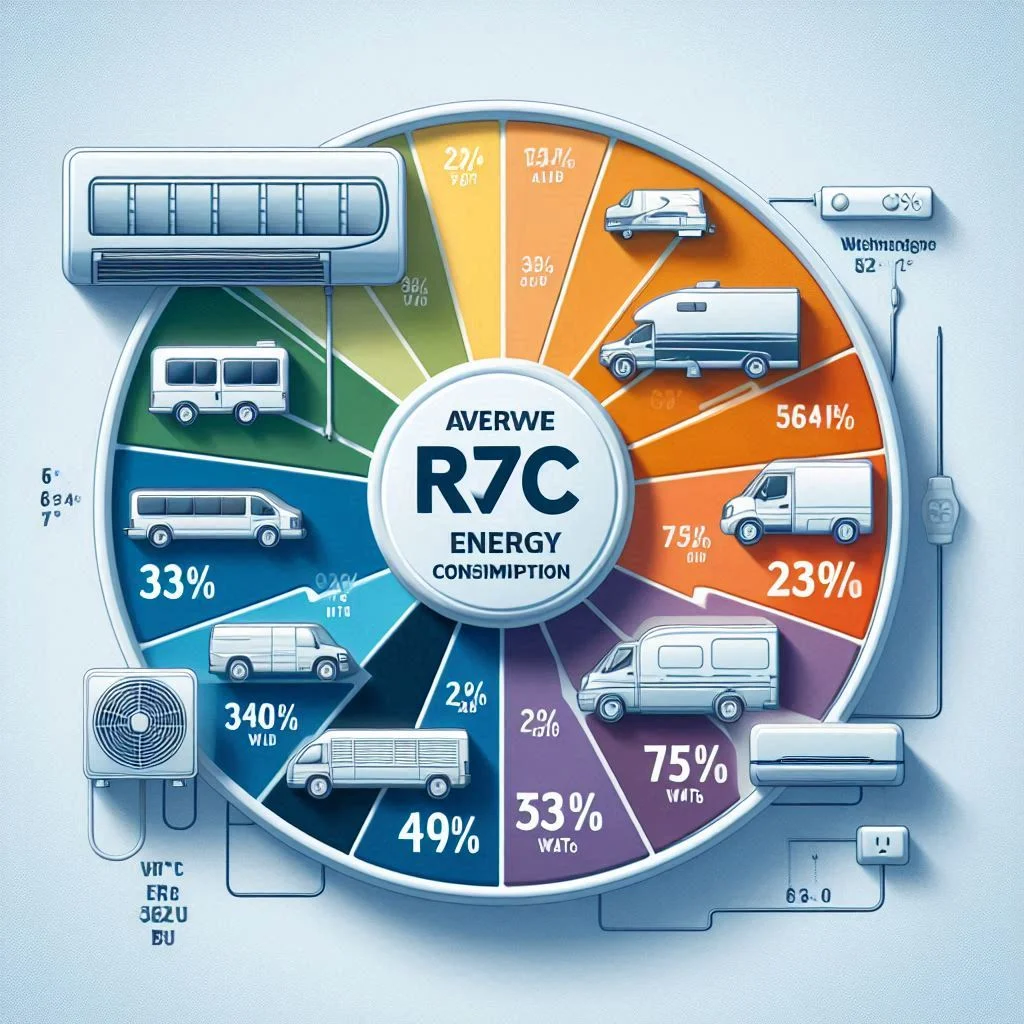
How Much Electricity Does an RV Air Conditioner Use?
The electricity usage of an RV air conditioner can be calculated based on its wattage and the duration of operation. For example, if an air conditioner consumes 1,500 watts and runs for 8 hours, it will use:
Electricity Consumption (kWh)=Wattage×Hours1000\text{Electricity Consumption (kWh)} = \frac{\text{Wattage} \times \text{Hours}}{1000}Electricity Consumption (kWh)=1000Wattage×Hours
Electricity Consumption=1,500 watts×8 hours1000=12 kWh\text{Electricity Consumption} = \frac{1,500 \, \text{watts} \times 8 \, \text{hours}}{1000} = 12 \, \text{kWh}Electricity Consumption=10001,500watts×8hours=12kWh
This calculation helps RV owners estimate their energy costs based on local electricity rates, allowing for better budgeting while on the road.
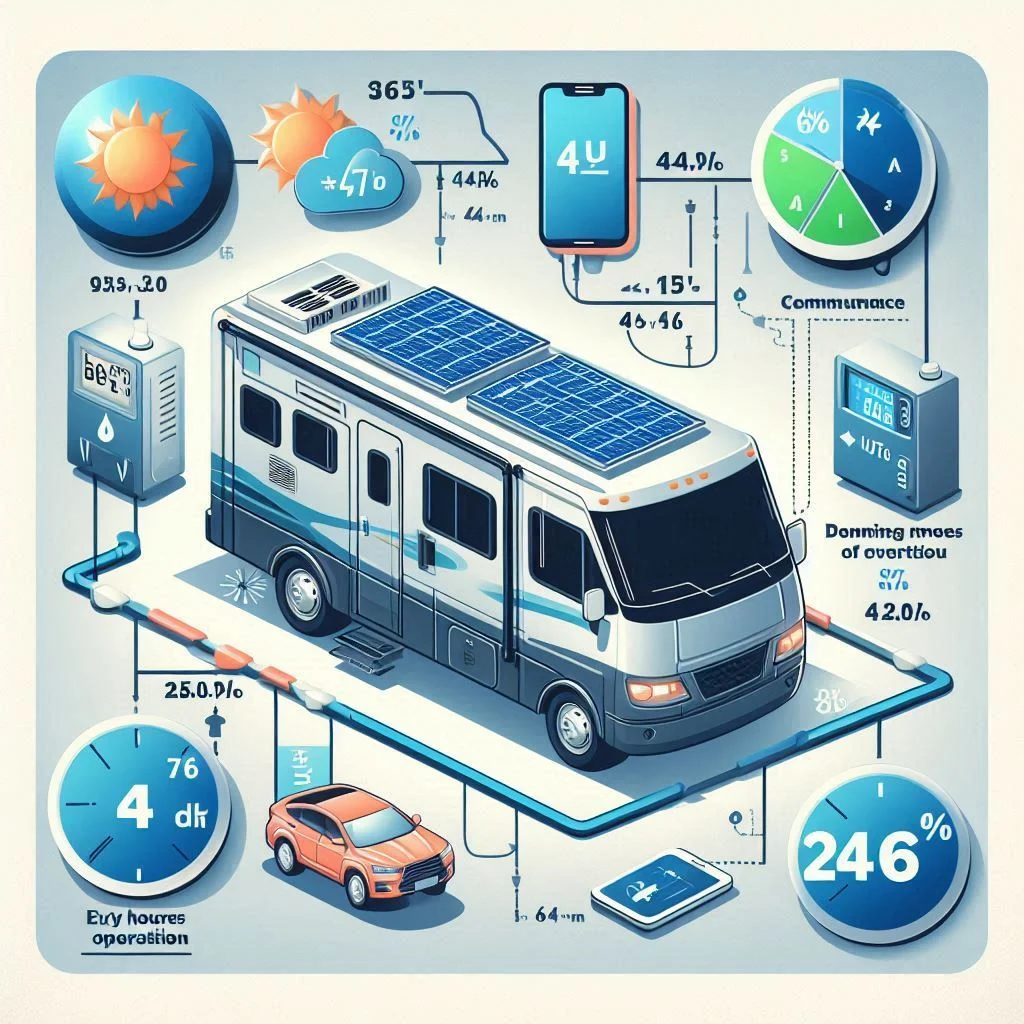
Typical Power Requirements for RV Air Conditioners
Understanding the typical power requirements for RV air conditioners is vital for planning your energy setup. The power requirements can vary based on factors such as:
- Size of the Unit: Smaller units (around 13,500 BTU) generally require less power than larger units (15,000 BTU or more).
- Type of AC: Ducted systems may have different requirements than ductless or portable units.
- Environmental Conditions: Hotter climates may demand more cooling power, impacting overall energy usage.

Calculating Your RV’s AC Wattage Needs
Calculating the wattage needs of your RV’s air conditioner is essential for selecting the right power source, whether you’re using a generator, solar panels, or shore power. This guide will walk you through the necessary steps to ensure you have sufficient power for your cooling needs.
Step 1: Identify the AC Unit Specs
The first step in calculating your RV’s AC wattage needs is to gather the specifications of your air conditioning unit. Each model will have a unique set of specifications, typically found in the user manual or on the manufacturer’s label. Key details to note include:
- BTU Rating: This indicates the cooling capacity. Most RV air conditioners range from 13,500 to 15,000 BTUs.
- Wattage: Look for both the running wattage (the power consumed while operating) and the starting wattage (the surge power needed at startup).
Understanding these specifications will help you accurately determine how much power your RV air conditioner requires.

Step 2: Differentiate Between Starting and Running Wattage
When calculating wattage needs, it’s crucial to distinguish between starting and running wattage.
- Running Wattage: This is the amount of power the unit needs to operate continuously. For example, a typical 15,000 BTU RV air conditioner may use around 1,500 watts.
- Starting Wattage: This refers to the initial power surge when the unit starts up, which can be 2 to 3 times the running wattage. For the same air conditioner, the starting wattage might peak at 3,000 to 4,500 watts.
Knowing both values ensures you choose a generator or power source that can handle the initial surge as well as the continuous operation.
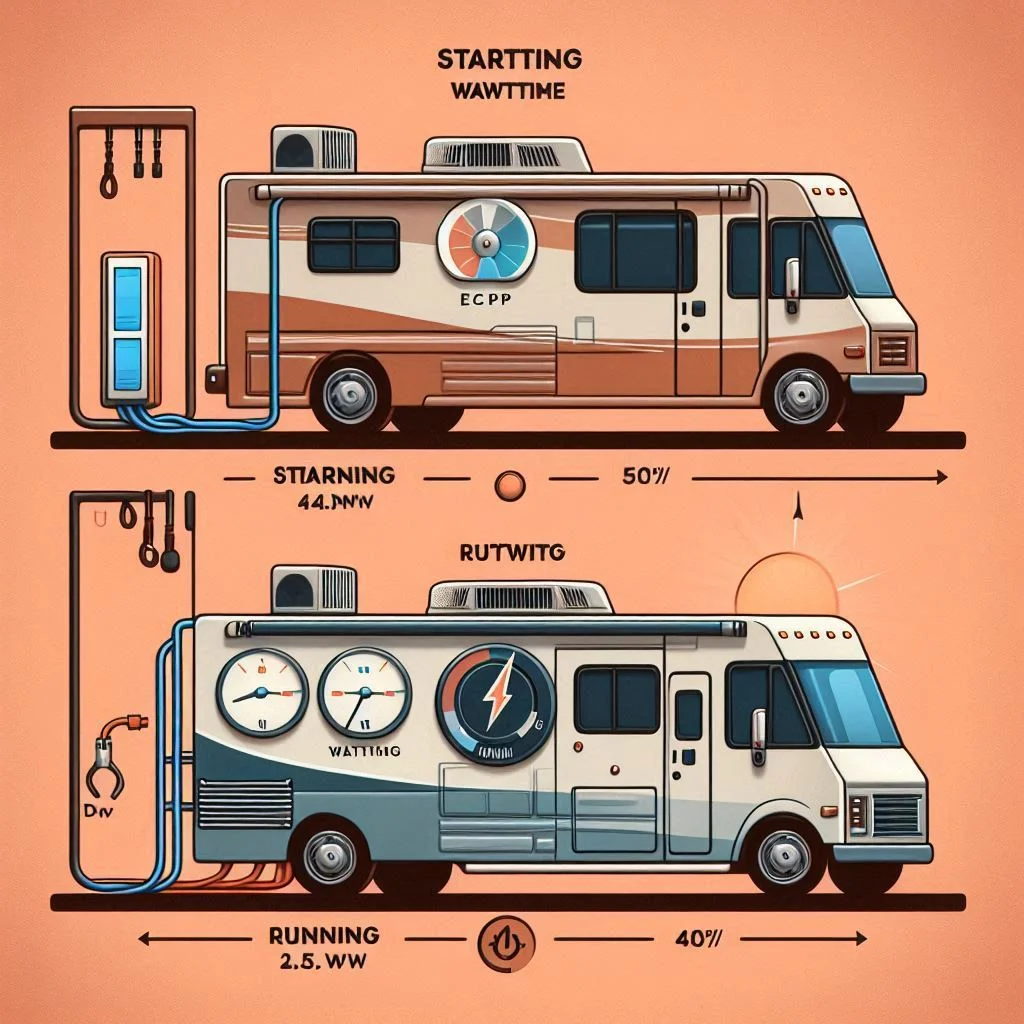
Step 3: Check Your Power Sources
After determining the wattage requirements of your AC unit, the next step is to evaluate your available power sources. Common power sources for RVs include:
- Generators: Ensure your generator can provide both the starting and running wattage needed for your air conditioner. A generator rated for at least 4,500 watts is often recommended for a 15,000 BTU unit.
- Solar Power: If using solar panels, calculate the total wattage produced by your solar setup and consider using battery storage to handle peak usage.
- Shore Power: When connected to an external power source, ensure it can deliver sufficient wattage to support your RV’s air conditioner along with other appliances.
Understanding your power options will help you optimize your RV’s energy use.
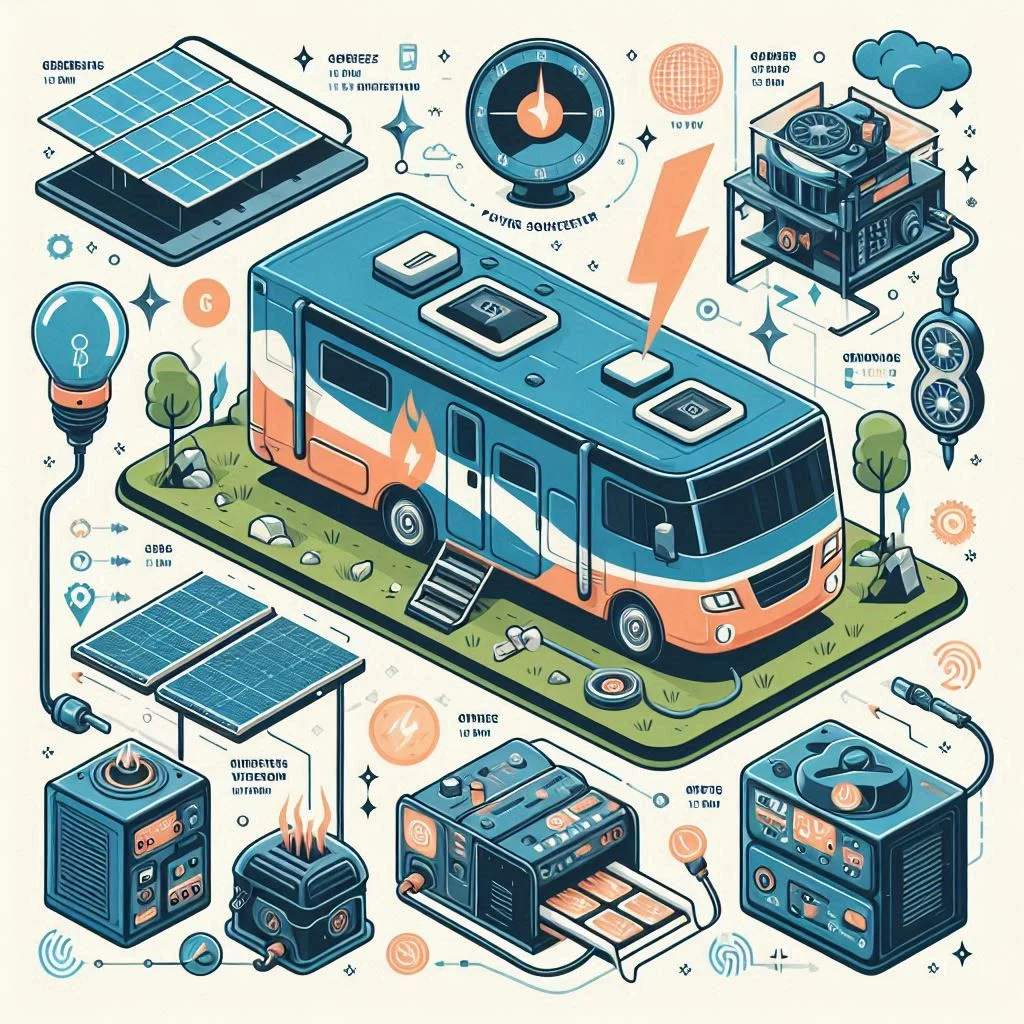
Step 4: Account for Other Appliances
Finally, when calculating your RV’s AC wattage needs, it’s essential to consider the power consumption of other appliances you may be using simultaneously. Common appliances and their approximate wattages include:
- Refrigerator: 100-300 watts
- Microwave: 600-1,200 watts
- Television: 100-400 watts
- Lights: 10-100 watts (depending on the type)
Add the wattage of these appliances to your air conditioner’s running wattage to ensure your power source can handle the total load. For instance, if your AC requires 1,500 watts and your refrigerator uses 200 watts, you’ll need at least 1,700 watts of continuous power.

RV AC Watts Consumption by Model
Understanding the wattage consumption of different RV air conditioner models is crucial for RV owners looking to manage their energy usage efficiently. This section covers the power requirements for popular models, ensuring you can make informed decisions when selecting an air conditioning unit for your RV.
Atwood Air Command
The Atwood Air Command is a well-known model in the RV air conditioning market, praised for its performance and efficiency. Here are the key power consumption details:
- BTU Rating: Available in 13,500 and 15,000 BTU options.
- Running Wattage: The 13,500 BTU model typically consumes around 1,350 watts, while the 15,000 BTU version uses approximately 1,500 watts.
- Starting Wattage: At startup, the Atwood Air Command can draw between 3,000 to 3,500 watts.
This model is designed to operate quietly while delivering efficient cooling, making it a popular choice for RV enthusiasts.

Coleman-Mach 3 Power Saver
The Coleman-Mach 3 Power Saver is another popular choice for RV owners, known for its energy efficiency and reliable cooling performance. Here are the wattage details:
- BTU Rating: This model is available in both 13,500 BTU and 15,000 BTU versions.
- Running Wattage: The 13,500 BTU unit generally uses around 1,200 watts, whereas the 15,000 BTU model typically consumes about 1,500 watts.
- Starting Wattage: The starting wattage for the Coleman-Mach 3 Power Saver can range from 3,500 to 4,000 watts.
This model features a unique design that reduces airflow resistance, enhancing its efficiency while minimizing noise levels.
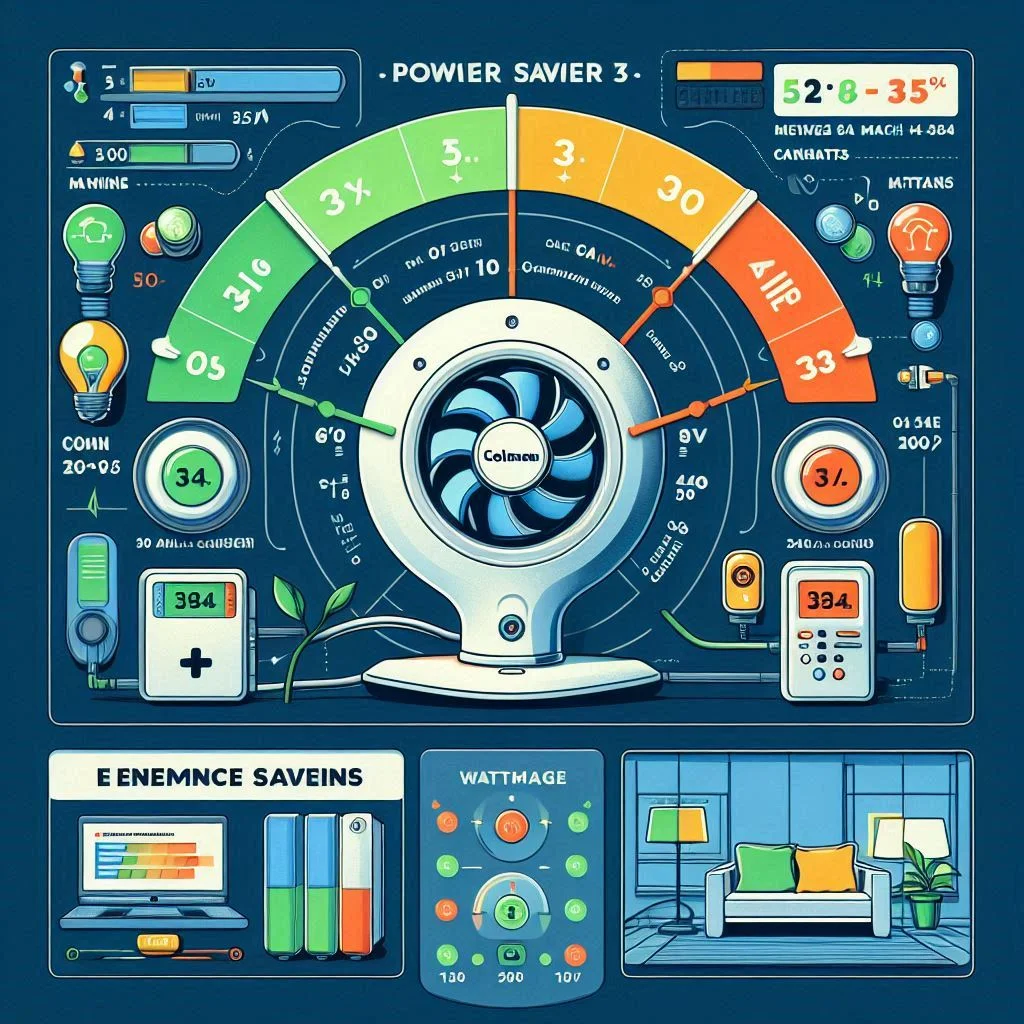
Other Popular RV AC Models
In addition to the Atwood Air Command and Coleman-Mach 3 Power Saver, several other RV air conditioning models are widely used by RV owners. Here are a few notable mentions:
-
Dometic Brisk II:
- BTU Rating: Available in 13,500 and 15,000 BTU options.
- Running Wattage: The 13,500 BTU model uses about 1,500 watts, and the 15,000 BTU version consumes approximately 1,800 watts.
- Starting Wattage: Starting wattage can range from 3,500 to 4,500 watts.
-
Furrion Chill:
- BTU Rating: Comes in a 15,000 BTU model.
- Running Wattage: Uses about 1,600 watts.
- Starting Wattage: The starting wattage is typically around 3,600 watts.
-
Airxcel Mach 15:
- BTU Rating: 15,000 BTU.
- Running Wattage: Consumes about 1,500 watts.
- Starting Wattage: Peaks at approximately 3,800 watts during startup.
Understanding the wattage consumption of these popular models allows RV owners to choose the right air conditioning unit that aligns with their power supply capabilities and cooling needs.
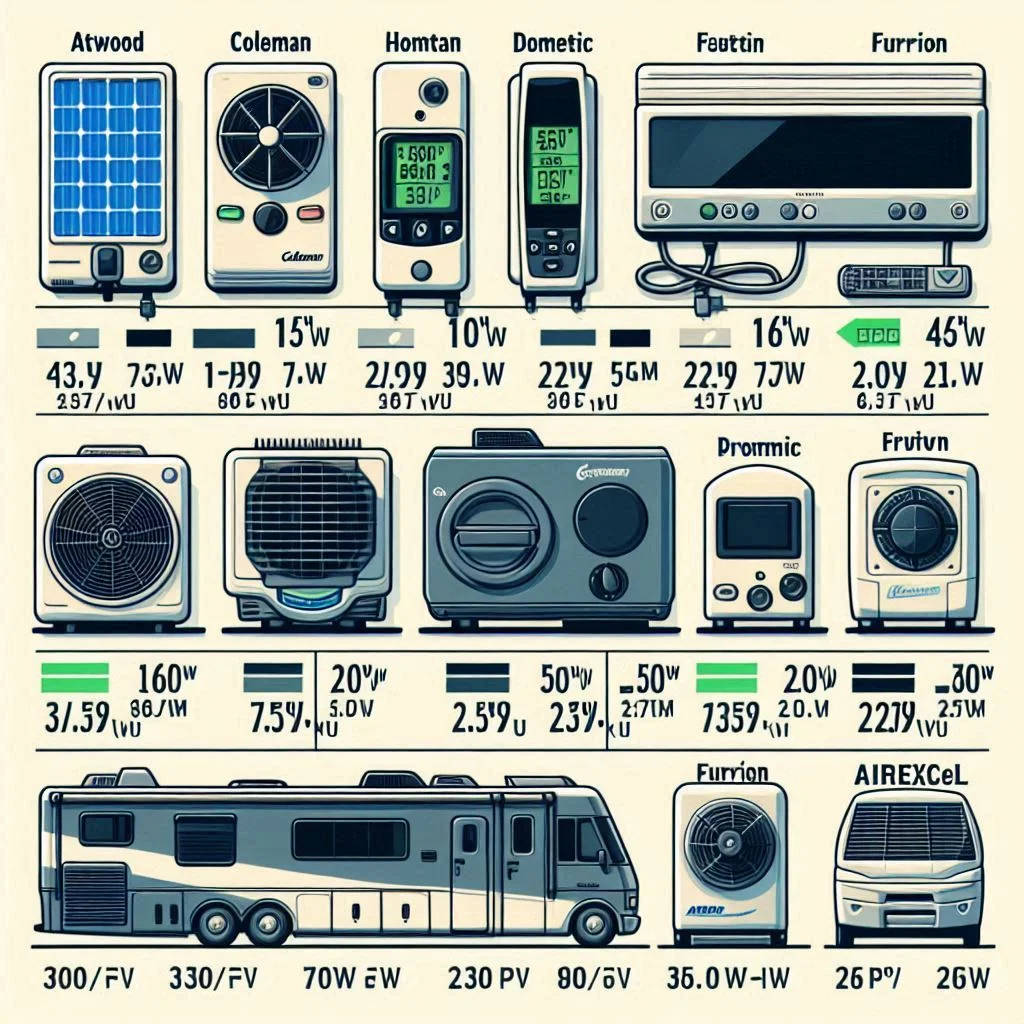
Off-Grid Power Solutions for RV AC
Finding reliable off-grid power solutions for your RV air conditioning unit is essential for maintaining comfort during your travels. Whether you are camping in remote locations or seeking energy independence, knowing your power options can enhance your RV experience. This guide outlines what size generator you need for RV AC when off-grid and explores various Jackery solar generator options tailored for RV use.
What Size Generator Do I Need for RV AC When Off Grid?
When planning to run your RV air conditioner off-grid, selecting the right size generator is crucial for ensuring efficient operation. The size of the generator depends on the wattage requirements of your specific AC model and any other appliances you plan to use simultaneously.
-
Determine AC Wattage: Start by checking your RV air conditioner’s specifications. For example, a 13,500 BTU AC typically requires about 1,500 watts to run continuously and may need up to 3,000 watts to start.
-
Add Other Appliances: Consider the wattage of other devices you might be using, such as refrigerators, microwaves, and lighting. For instance, if you add a refrigerator that consumes 200 watts, your total wattage requirement will increase to 1,700 watts.
-
Choose a Generator: To accommodate your AC and additional appliances, select a generator with a wattage output that exceeds your total requirement. A generator rated for 3,500 to 4,500 watts is generally recommended for running a 15,000 BTU RV AC and other devices.
By choosing the right generator size, you can ensure reliable and efficient power for your RV air conditioning and other electrical needs while off-grid.
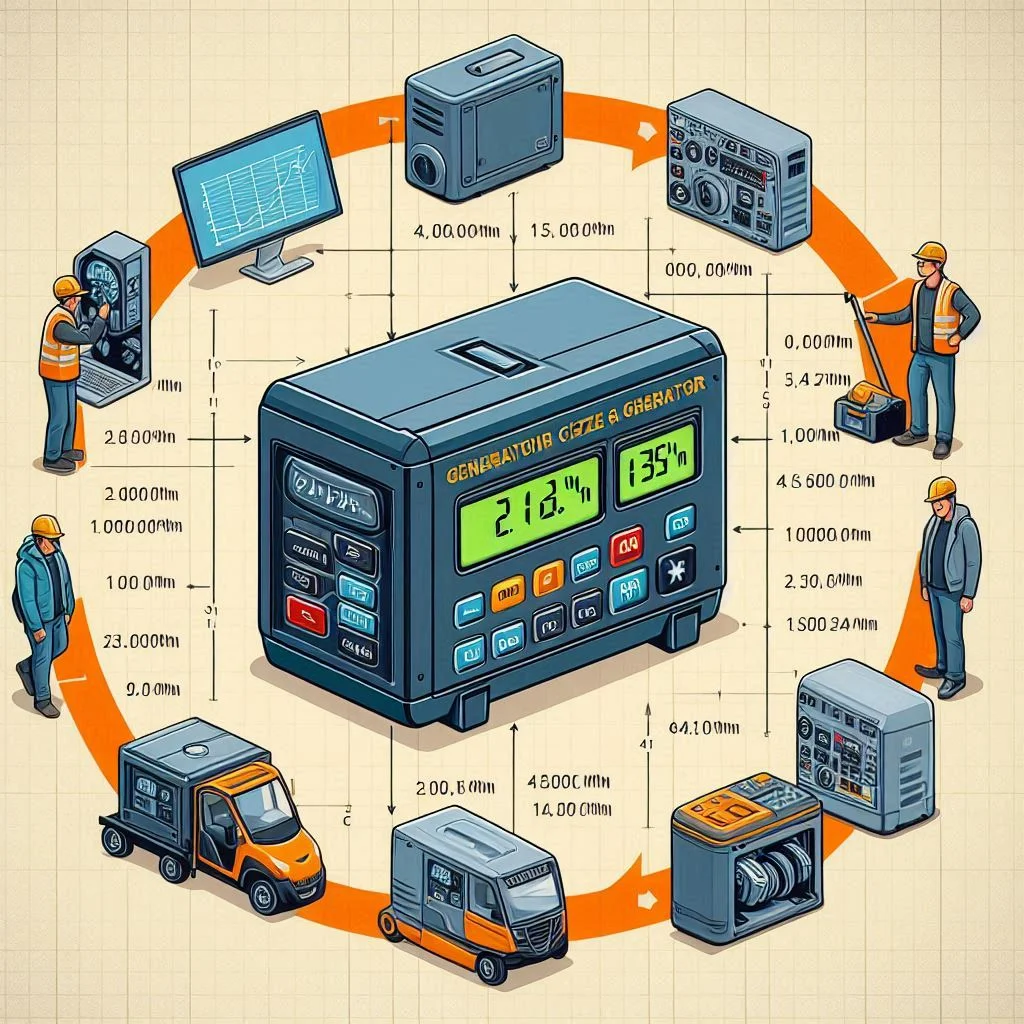
Jackery Solar Generator Options for RVs
Jackery offers a range of solar generators that provide an eco-friendly and efficient power source for RVs, especially when off-grid. Here’s a closer look at some popular Jackery solar generator options:
Jackery Solar Generator 3000 Pro
The Jackery Solar Generator 3000 Pro is a powerful option designed for serious RV users. Key features include:
- Power Output: This model has a capacity of 3,024 watt-hours and can deliver up to 3,000 watts of continuous power, making it suitable for running larger appliances, including RV air conditioners.
- Solar Input: It supports solar charging with a maximum input of 1,200 watts, allowing you to recharge the unit quickly using solar panels.
- Portability: Weighing just under 70 pounds, it is portable enough to transport and use in various locations.
This generator is ideal for extended off-grid trips, providing enough power for air conditioning and other essential devices.
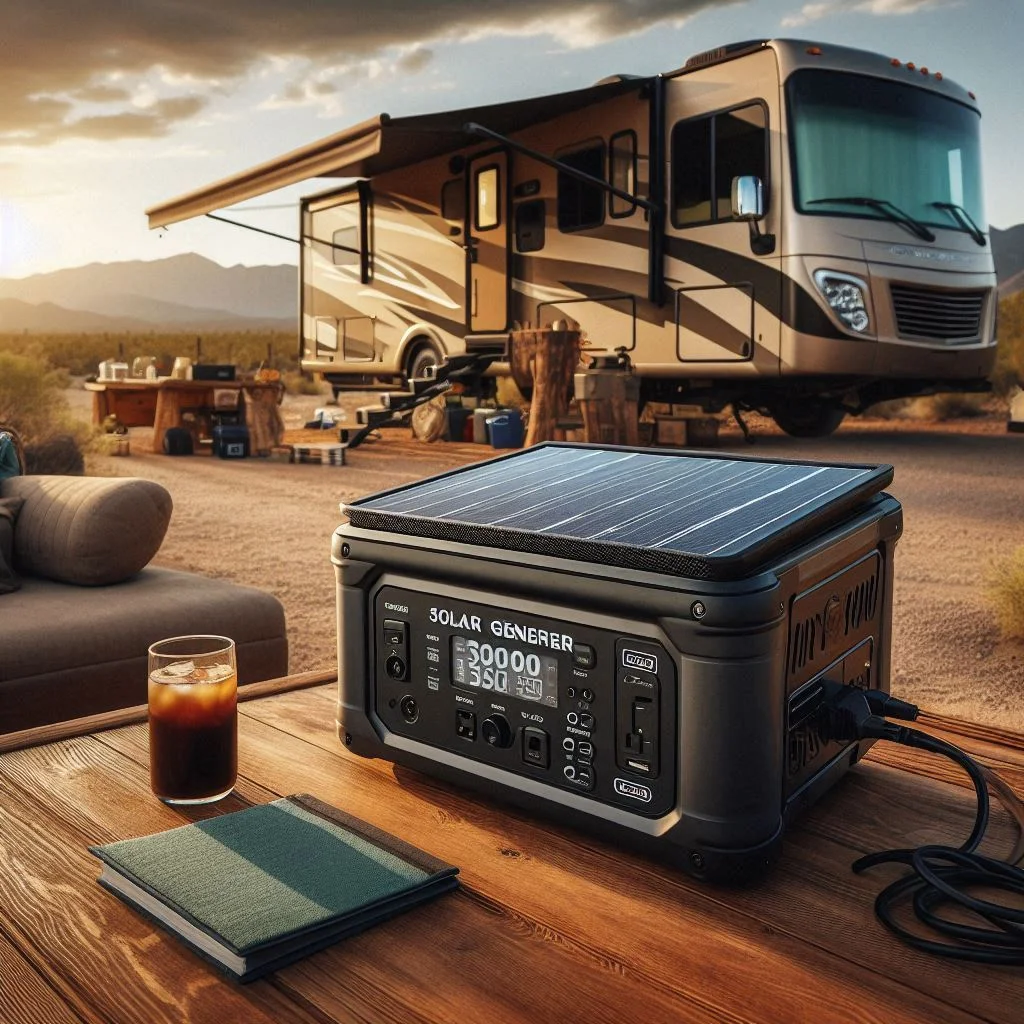
Jackery Solar Generator 2000 Plus
The Jackery Solar Generator 2000 Plus is another excellent choice for RVers seeking reliable power. Key features include:
- Power Output: With a capacity of 2,160 watt-hours and a continuous output of 2,200 watts, it can handle most RV appliances, including air conditioners.
- Solar Input: This model supports up to 800 watts of solar input for fast recharging, allowing for sustainable energy use while off-grid.
- Lightweight Design: Weighing about 48 pounds, it is designed for easy transport and setup.
This generator offers a balanced mix of power and portability, making it suitable for weekend trips and longer excursions.
Jackery Solar Generator 2000 Plus Kit (4kWh)
For those needing more power, the Jackery Solar Generator 2000 Plus Kit (4kWh) is an excellent option. Key features include:
- Power Output: This kit provides a total capacity of 4,160 watt-hours, allowing users to run multiple appliances simultaneously, including a 15,000 BTU RV air conditioner.
- Expandable Solar Input: It supports a solar input of up to 1,200 watts, enabling quick recharges and extended use in off-grid situations.
- Comprehensive Kit: This kit typically includes solar panels, ensuring you have everything needed for a complete solar power setup.
This generator is perfect for longer off-grid trips, providing ample power for air conditioning and other high-demand appliances.
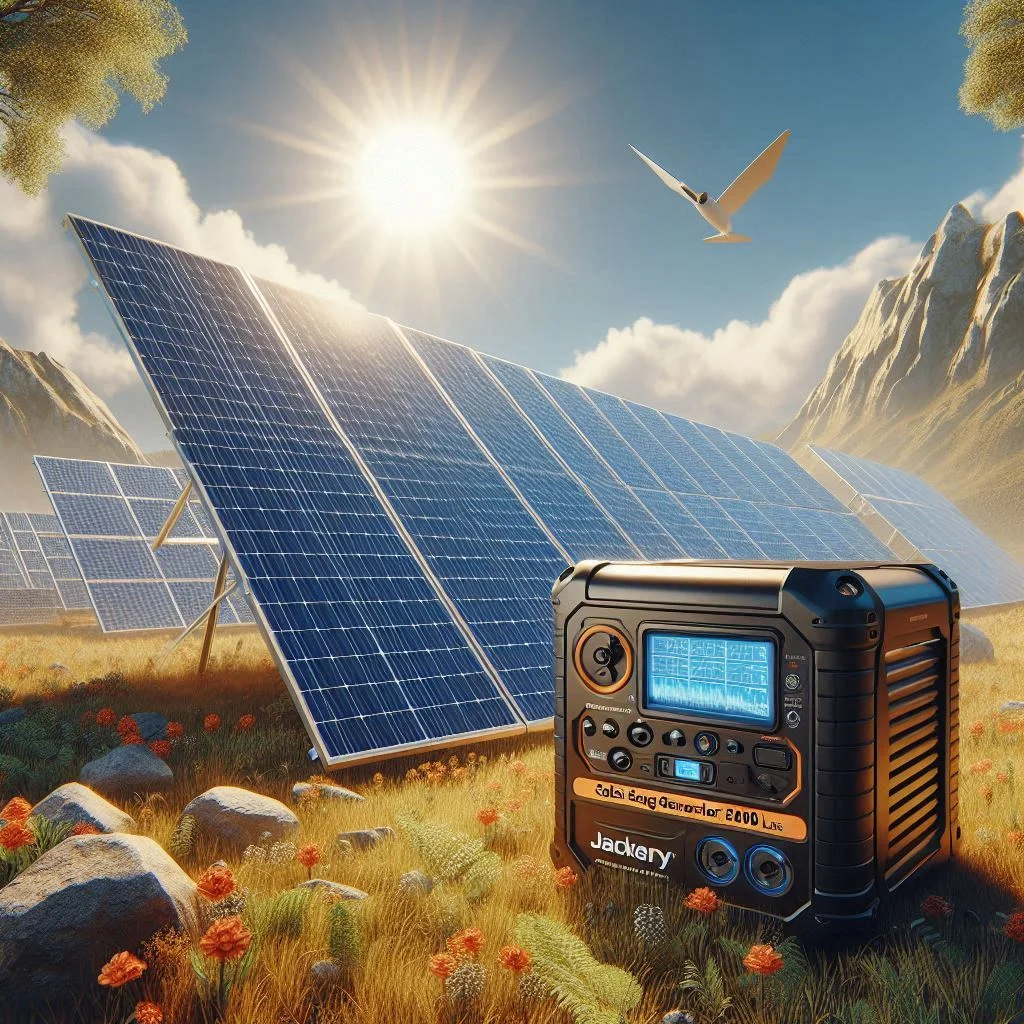
Enhancing Energy Efficiency for Your RV Air Conditioner
Improving the energy efficiency of your RV air conditioner not only helps reduce power consumption but also enhances your overall comfort while traveling. By implementing a few practical strategies, you can maximize the performance of your AC unit and enjoy cooler temperatures without straining your power supply. This guide explores three key methods to enhance energy efficiency in your RV.
Keep the Filter Clean
One of the most effective ways to maintain your RV air conditioner’s efficiency is by keeping the air filter clean. A clogged or dirty filter can significantly hinder airflow, forcing your AC unit to work harder and consume more energy.
-
Frequency of Cleaning: Inspect your filter every month, especially during heavy use periods. Depending on your usage and environment (dusty conditions may require more frequent cleaning), you may need to clean or replace the filter every 1 to 3 months.
-
Cleaning Method: For reusable filters, you can gently wash them with mild soap and water, ensuring they are completely dry before reinstalling. If your filter is disposable, replace it with a new one according to the manufacturer’s recommendations.
-
Benefits: Keeping your air filter clean improves airflow, reduces energy consumption, and prolongs the lifespan of your air conditioning unit.
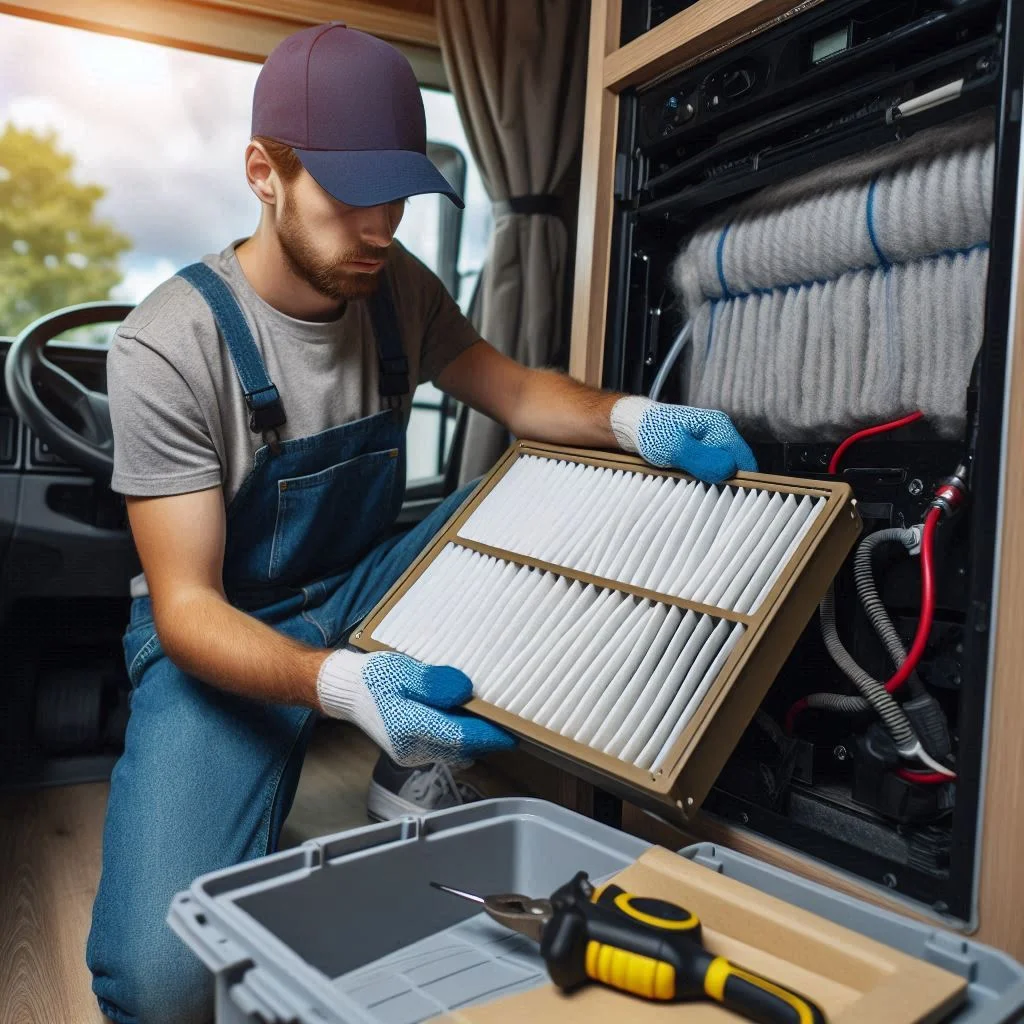
Insulate Windows and Doors
Proper insulation of your RV’s windows and doors can significantly reduce the workload on your air conditioner. When hot air enters through poorly insulated areas, your AC has to work harder to maintain a comfortable temperature.
-
Window Treatments: Use reflective window films, shades, or thermal curtains to minimize heat gain. These materials can block sunlight and keep your RV cooler, reducing the need for air conditioning.
-
Weather Stripping: Check the seals around doors and windows for any gaps or wear. Installing weather stripping can help prevent cool air from escaping and hot air from entering, enhancing the efficiency of your HVAC system.
-
Benefits: Insulating windows and doors not only keeps your RV cooler but also improves overall comfort and reduces energy costs by decreasing reliance on the AC.
Optimize Thermostat Settings
Optimizing your thermostat settings is essential for maintaining an efficient and effective cooling system in your RV.
-
Recommended Temperature: Set your thermostat to a moderate temperature, ideally around 75°F. This allows for a comfortable environment while reducing energy usage. Every degree lower can significantly increase energy consumption.
-
Use Programmable Thermostats: If your RV is equipped with a programmable thermostat, take advantage of this feature to adjust temperatures based on your schedule. Set the temperature higher when you are away from the RV and lower it before you return.
-
Location of the Thermostat: Ensure that the thermostat is located away from direct sunlight or heat sources, as these can cause inaccurate readings and unnecessary cooling.
-
Benefits: Proper thermostat management not only maximizes comfort but also minimizes energy consumption, allowing you to extend your power supply while enjoying your RV experience.

FAQ About RV Air Conditioner Power Requirements
Understanding the power requirements of your RV air conditioner is crucial for optimizing its performance and ensuring energy efficiency. Here are some frequently asked questions that address common concerns related to RV air conditioner power consumption.
1. How Much Power Does an RV Air Conditioner Use Per Hour?
The power consumption of an RV air conditioner can vary significantly based on several factors, including the unit’s BTU rating, the outside temperature, and the insulation quality of your RV.
-
Average Power Usage: Typically, a standard RV air conditioner (13,500 BTU) uses about 1,500 watts of power when running. However, this can fluctuate. For example, during peak demand (starting phase), the unit may require up to 3,000 watts for a short period.
-
Calculation: To estimate hourly power consumption, multiply the wattage by the number of hours the AC operates. For instance, if your AC runs for 6 hours at 1,500 watts, it will consume approximately 9,000 watt-hours or 9 kWh.
-
Energy Costs: If you’re charged per kWh by your power provider, multiply the total kWh by the rate charged to understand your operating costs.
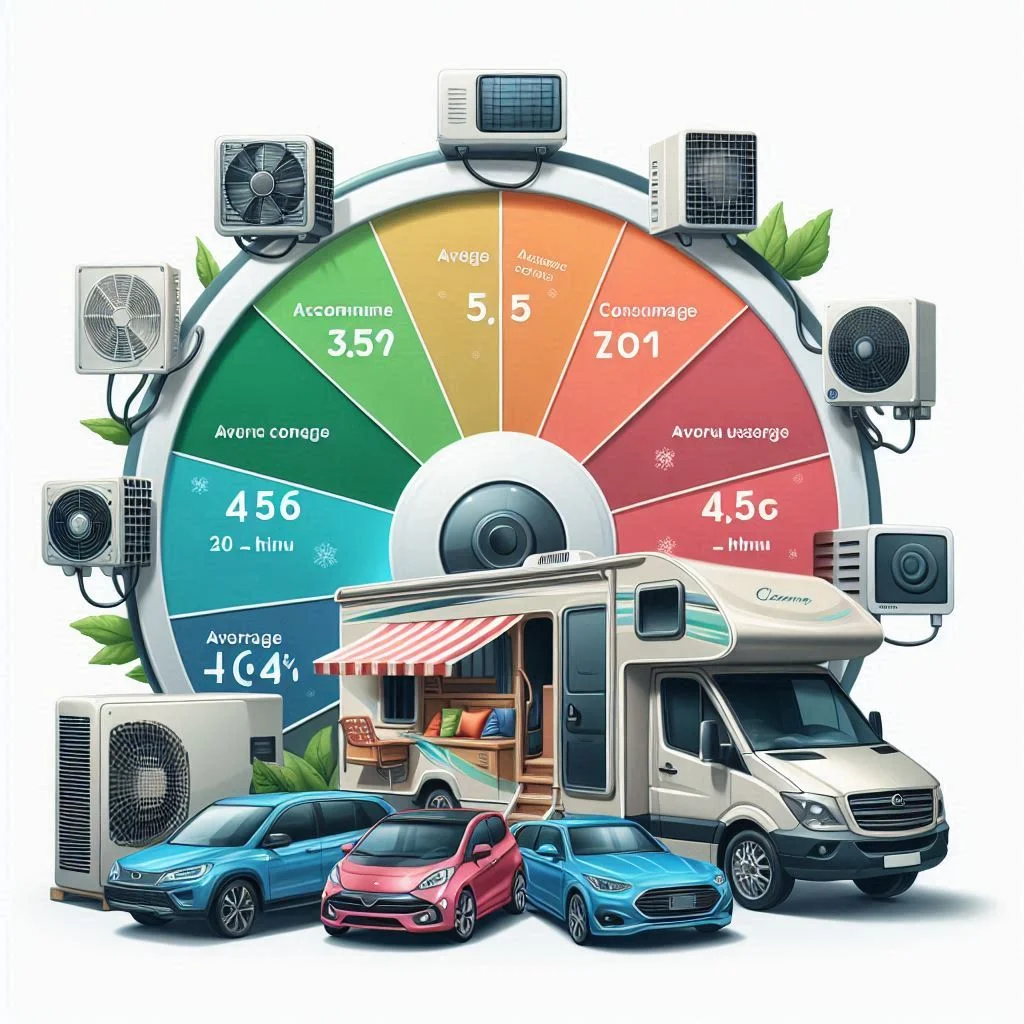
2. How Many Watts Does a Portable AC Use?
Portable air conditioners are often considered for RVs due to their convenience and flexibility. However, it’s essential to understand their power consumption to ensure your power supply can handle them.
-
Average Wattage: Portable AC units typically use between 800 to 1,500 watts, depending on their BTU capacity. Smaller units may consume less, while larger models (like those rated around 12,000 BTUs) can use up to 1,800 watts.
-
Comparative Efficiency: While portable ACs offer versatility, they may not be as energy-efficient as fixed RV air conditioners. If you’re looking for cooling in an RV, always compare the wattage and cooling efficiency of different units.
-
Power Considerations: When using a portable AC, ensure your generator or power source can handle the startup surge, which can be higher than the running wattage.
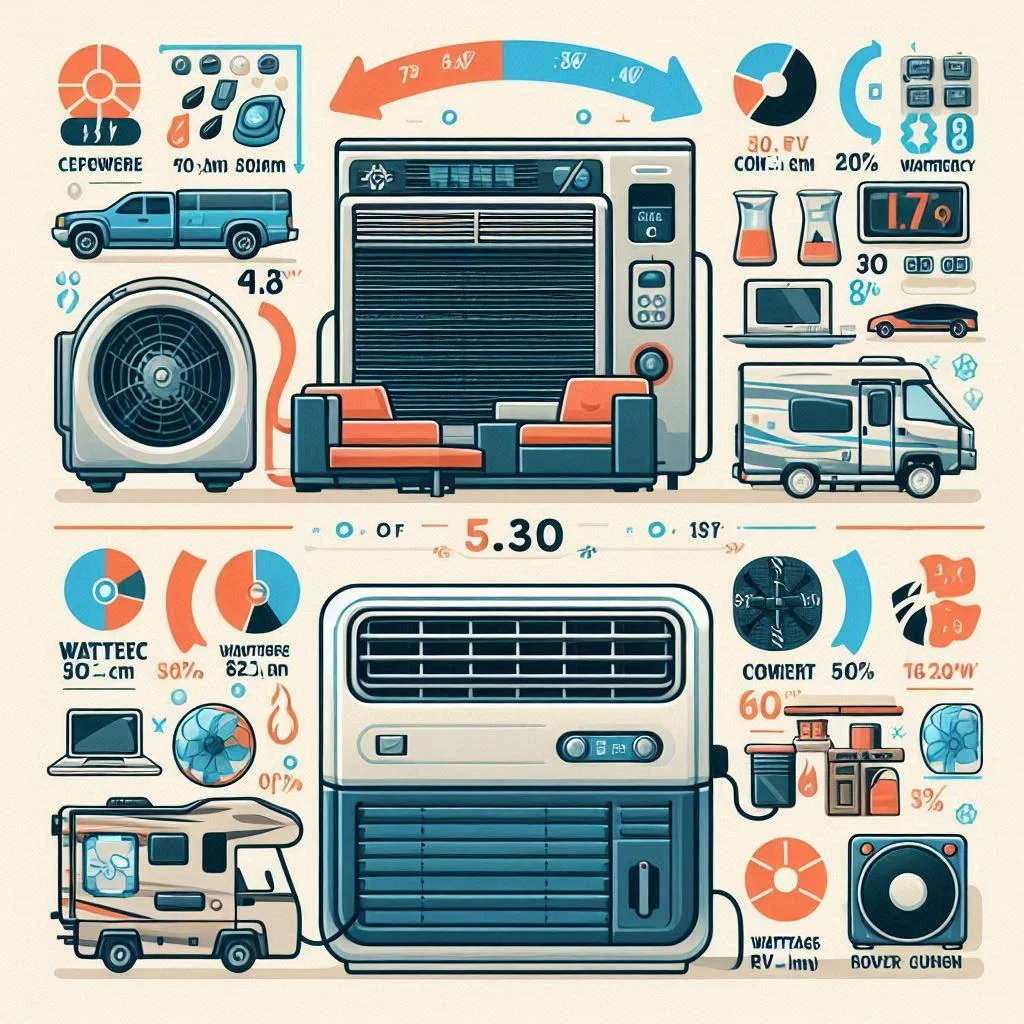
3. How Can I Make My RV Air Conditioner More Energy-Efficient?
Improving the energy efficiency of your RV air conditioner is essential for maximizing comfort while minimizing power consumption. Here are some effective strategies:
-
Regular Maintenance: Keep the air filter clean and ensure that the unit is free from debris. A well-maintained AC runs more efficiently and consumes less energy.
-
Thermostat Management: Set your thermostat to a moderate temperature (around 75°F) to avoid excessive cooling. Consider using programmable thermostats to optimize usage based on your schedule.
-
Insulation Improvements: Insulating windows and doors with reflective films or shades can significantly reduce heat gain, allowing your AC to maintain a cooler temperature without working harder.
-
Use Energy-Efficient Units: If you’re in the market for a new AC, consider energy-efficient models that have higher SEER ratings, as these units are designed to use less power while providing effective cooling.
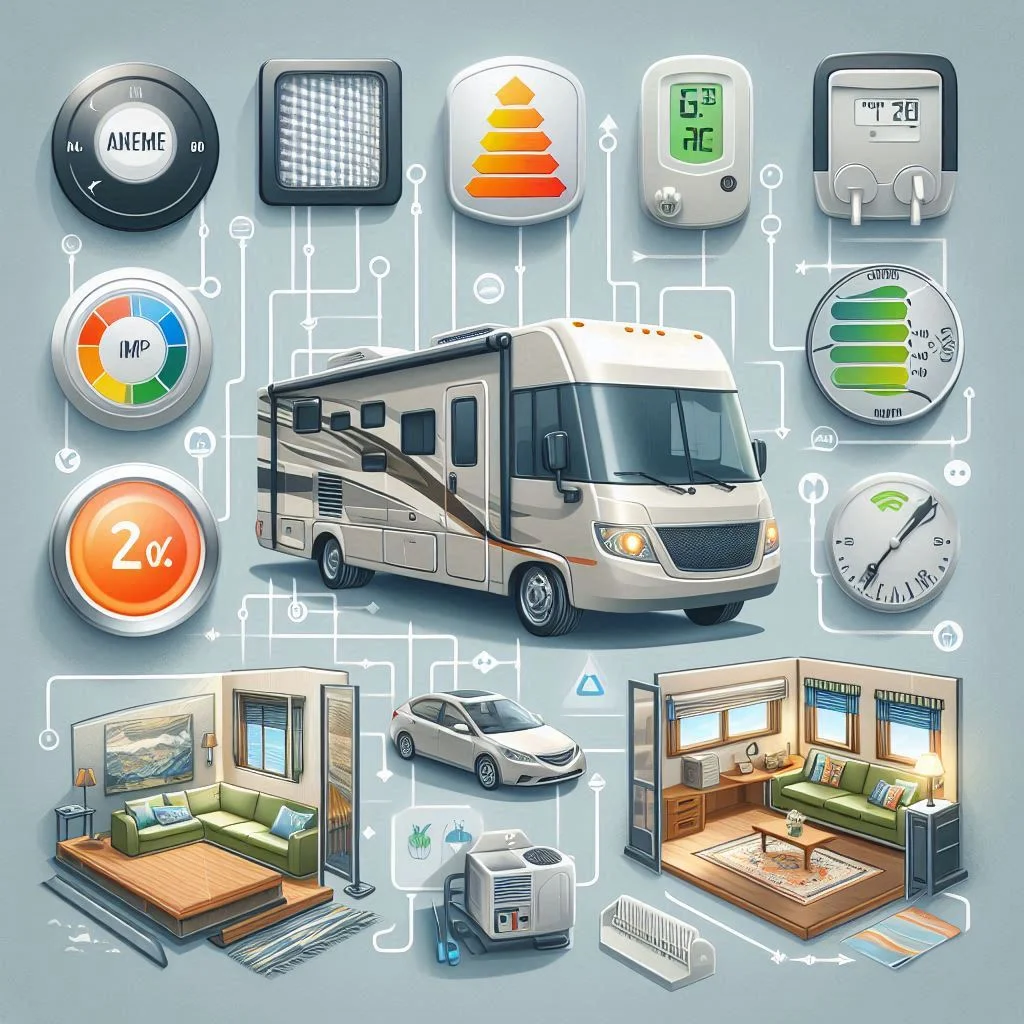
Conclusion:
In conclusion, understanding the power requirements of your RV air conditioner is essential for optimizing performance and ensuring energy efficiency during your travels. By calculating wattage needs, recognizing the consumption of different models, and implementing strategies for enhancing efficiency, you can enjoy a comfortable and cool environment without straining your power supply. Additionally, being aware of off-grid power solutions and maintaining your AC unit will contribute to a more sustainable and enjoyable RV experience. With the right knowledge and practices, you can navigate the challenges of RV air conditioning, maximizing comfort while minimizing energy costs. Whether you’re planning a weekend getaway or an extended road trip, keeping these power requirements in mind will ensure a more enjoyable and hassle-free adventure on the open road.

